Learn how to make Napoletana Sauce — a simple, classic Italian Napoli tomato sauce straight from the heart of Naples 🇮🇹. Made with just a few fresh ingredients like sweet San Marzano tomatoes, garlic, olive oil, and basil, this classic sugo al pomodoro is a true taste of cucina povera — humble ingredients transformed into something extraordinary.
Whether you’re tossing it through pasta, layering it in lasagna, smothering it over a pizza base, or spooning it over homemade gnocchi, this easy Napoli sauce delivers rich, comforting flavor every time. Slow-simmered, naturally sweet, and beautifully aromatic — it’s Italian home cooking at its best, and has a well deserved place on our regular cooking roster!
This recipe makes around 4-6 servings, and is ideal for any type of pasta!
Italian | Sauce | Tomato Sauce | Pasta Sauce
Table of contents:
- What you’ll need
- Equipment
- Instructions
- Cooking Tips for the Perfect Napoletana Sauce
- Origin of Napoletana sauce
- What Goes with Napoletana Sauce
- Cucina Povera?
- Nutrition Facts (per serving)
- FAQs
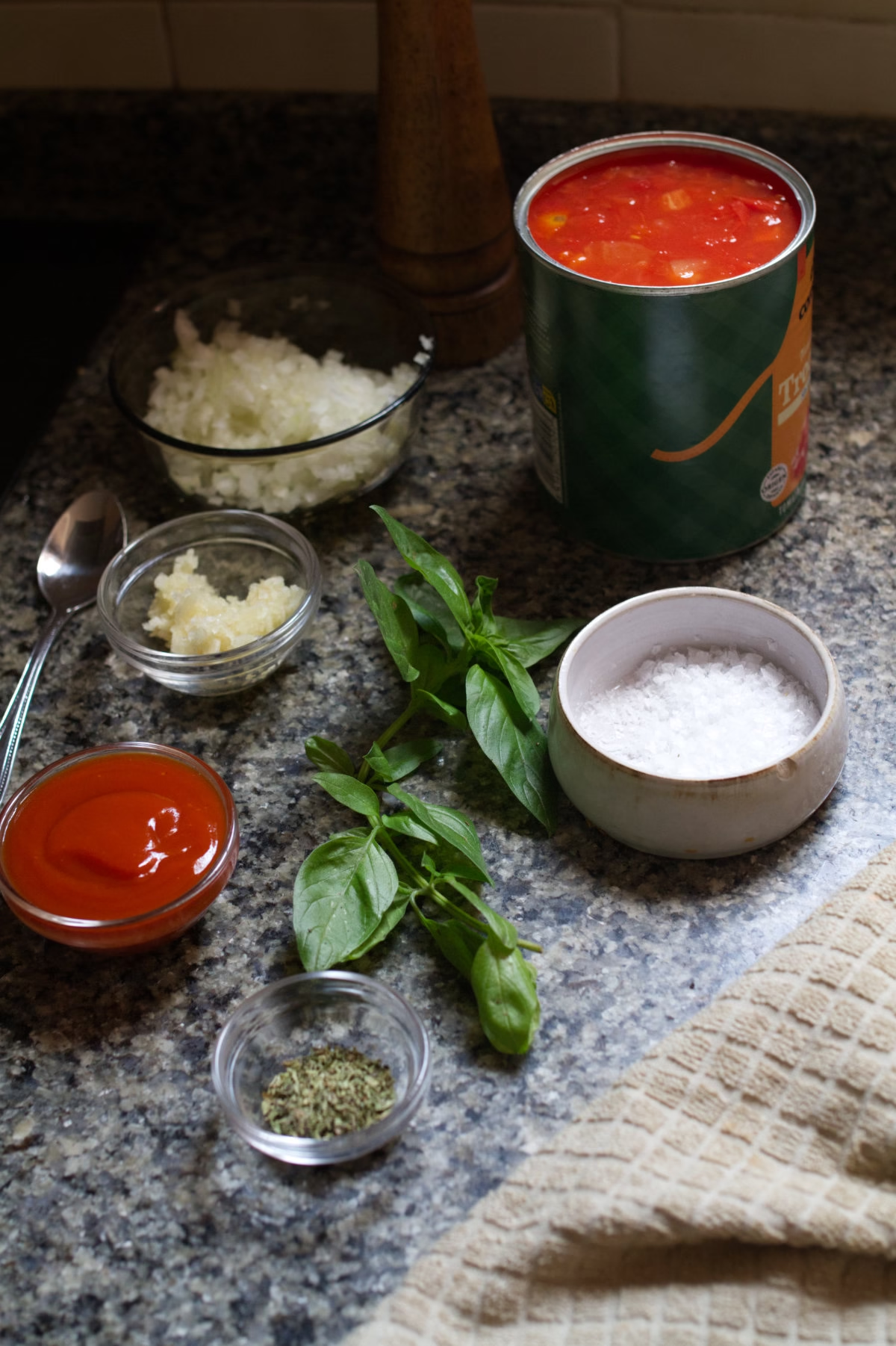
What you’ll need
Ingredients
Makes 4-6 servings
- Extra Virgin Olive Oil
- 1 small onion, finely diced
- 3 garlic cloves, minced (optional)
- 800 g (28 oz) canned peeled Tomatoes (ideally San Marzano)
- 2 Tbsp Tomato Paste
- ½ tsp Dried Oregano (organic)
- A few fresh basil leaves, with stems
- Salt and Freshly ground black pepper, to taste
- 1 tsp white sugar (optional)
Equipment
- 12-Inch Stainless Steel Frying Pan or skillet
- Wooden Cutting Board
- Chef Knife
- Garlic Press
- Immersion Blender (optional)
Instructions
Napoli Sauce:
Step 1 – Sauté aromatics
- In a wide pan, heat the olive oil over medium heat.
- Add the onion and sauté for 5 minutes
- If using, add the garlic and gently sauté until fragrant, around 2 minutes — do not let it burn.
Step 2 – Add tomatoes
- Add the canned tomatoes and stir through.
- If using whole (peeled) tomatoes, crush with a spoon or spatula.
Step 3 – Simmer
- Add a pinch of salt, some black pepper, and the tomato paste
- Reduce heat to low and let the sauce simmer gently for 20 minutes, stirring occasionally.
- The sauce should thicken slightly and the oil will rise to the top — a sign it’s ready.
- Taste and adjust seasoning (salt, pepper) and add any sugar if required.
- Add the bunch of basil and simmer for another 10-15 minutes.
Step 4 – Serve
- Remove the basil before serving or blending.
- Serve over your favorite pasta, veggies, or these amazing spinach and ricotta cheese dumplings (Malfatti).
- Enjoy!
Optional:
- For a smoother texture, pass the sauce through a food mill or blend briefly with an immersion blender.
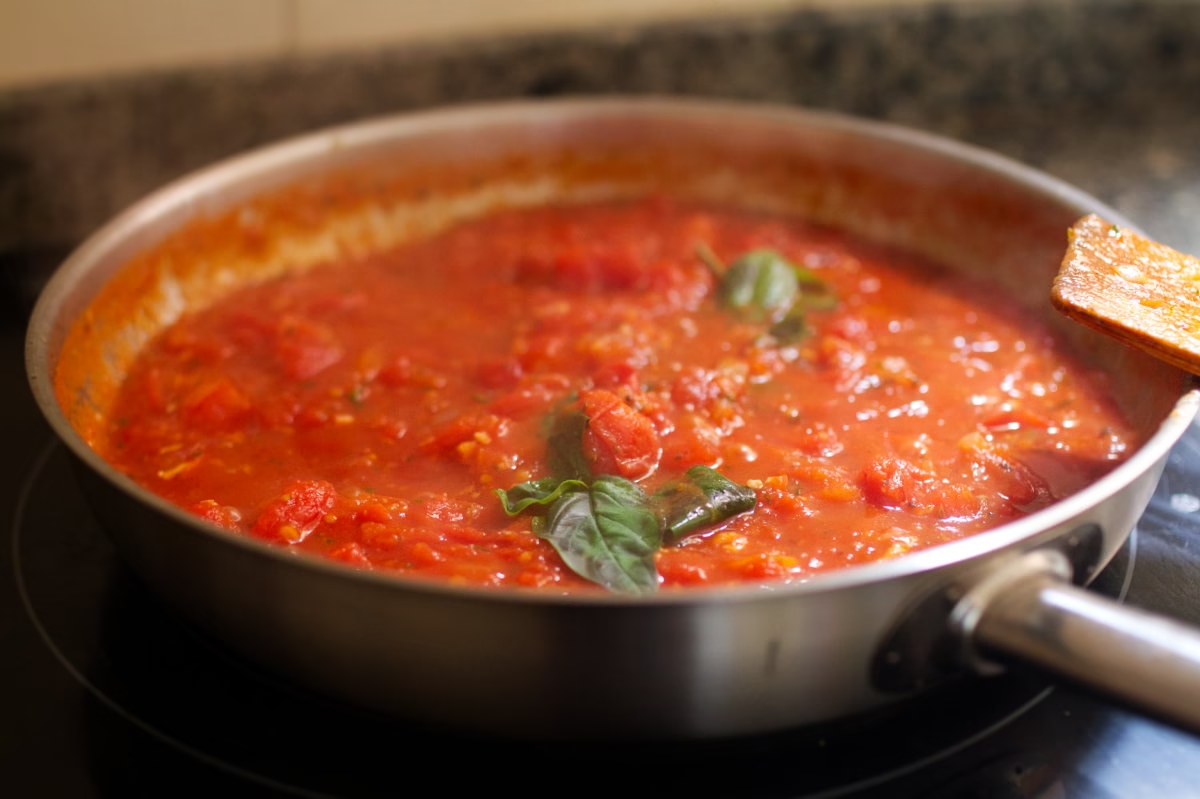
Cooking Tips for the Perfect Napoletana Sauce
1. Use San Marzano D.O.P. tomatoes.
For true Neapolitan flavor, go for San Marzano D.O.P. tomatoes — they’re naturally sweet, low-acid, and packed in rich juice.
If unavailable, pick canned tomatoes labeled “Italian style” or “vine-ripened.” canned ‘whole’ tomatoes are generally more flavorful compared to canned diced tomatoes.
2. Don’t rush the simmer.
Letting the sauce bubble gently for at least 30–40 minutes allows the flavors to deepen and the tomato’s natural sweetness to develop. Slow and low is the Italian secret.
3. Sweetness and seasoning check.
If your tomatoes are too acidic, a pinch of sugar balances the flavor naturally. It’s important to check and adjust seasoning levels around half way through. Don’t add all the seasoning all at the beginning.
4. Don’t burn the garlic!
Garlic that browns too much turns bitter — so add it after the onion has softened and keep the heat medium-low. Saute for around 2 minutes or until the garlic becomes fragrant.
5. Basil at the end.
Fresh basil loses its aroma if cooked too long. Add it toward the end of simmering for a fresher, more vibrant flavor. We suggest adding it during the last 5-10 minutes of the simmer.
6. Olive oil matters.
Use good-quality extra virgin olive oil — it makes a huge difference to the sauce’s flavor and aroma.
Chef tip: Drizzle a little extra on top before serving for that glossy Italian touch.
7. Make ahead & freeze.
Napoletana sauce tastes even better the next day. Store in the fridge for up to 5 days or freeze in portions for quick midweek pasta nights.8. Use it everywhere.
This sauce isn’t just for pasta — try it on homemade pizza, chicken parmigiana, eggplant involtini, or as a base for lasagna, Malfatti (italian Dumplings), and meatballs al sugo.
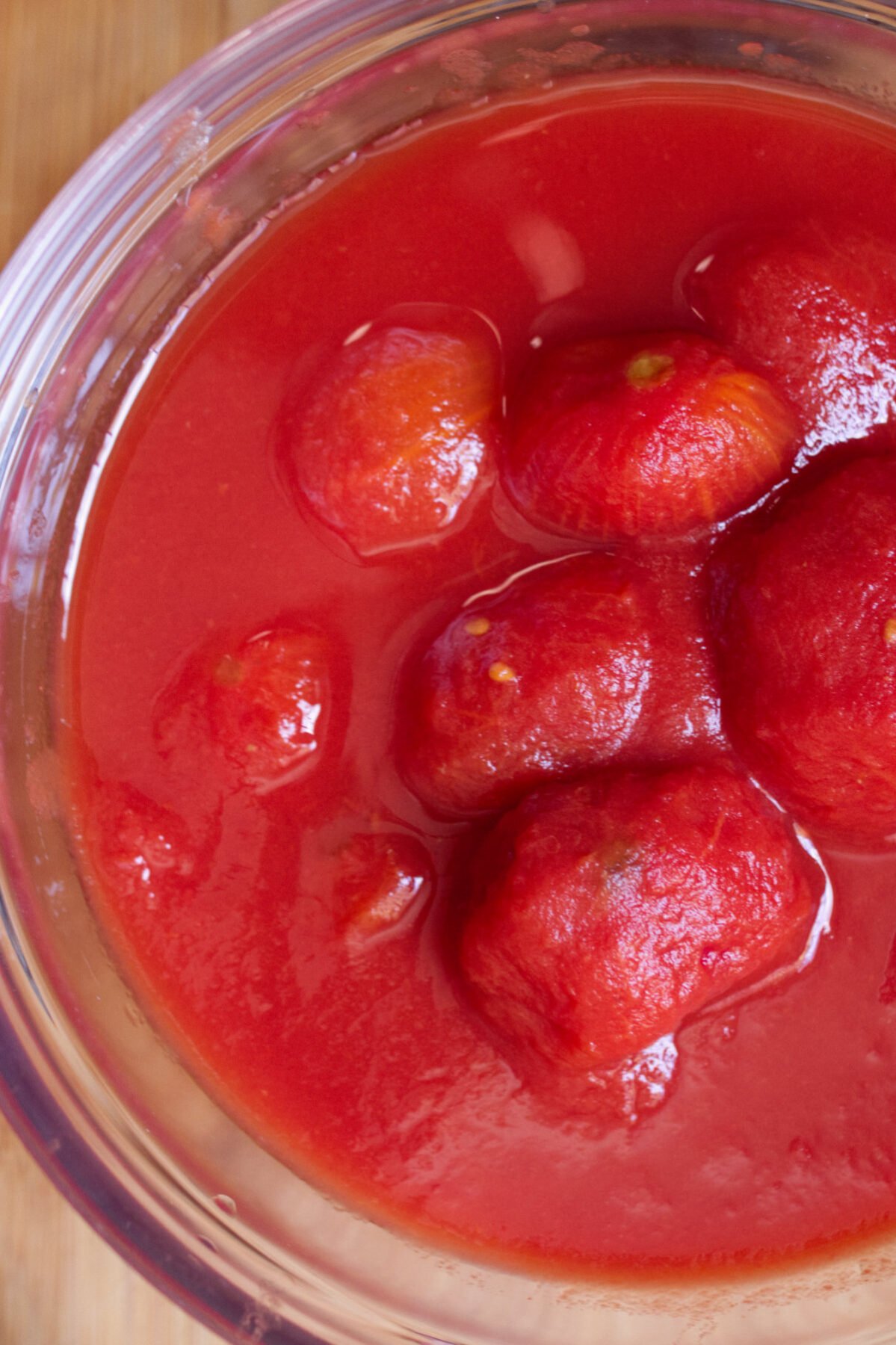
Origin of Napoletana sauce
Napoletana sauce (also called sugo al pomodoro or salsa di Napoli) comes from the sunny coastal city of Naples, Italy — the birthplace of many iconic Italian dishes. The sauce is a simple yet vibrant blend of tomatoes, olive oil, garlic, and herbs, reflecting the heart of Southern Italian home cooking.
It was first documented in the 18th century, soon after tomatoes — native to the Americas — became a staple in Italian cuisine. In Naples, cooks perfected this bright, tangy sauce to pair with pasta, pizza, and seafood. Unlike heavier northern sauces made with butter or meat, Napoletana sauce celebrates fresh Mediterranean flavors, showcasing the sweetness of ripe tomatoes and fragrant basil.
Cucina Povera?
Today, Napoletana sauce remains a cornerstone of Italian cooking and a symbol of the “cucina povera” tradition.
Cucina povera literally means “poor kitchen” or “peasant cooking” in Italian. It refers to a traditional style of Italian cooking that was born out of necessity and simplicity — when families, especially in rural and southern Italy, had to make the most of what little they had.
Rather than using expensive cuts of meat or rare ingredients, cucina povera focuses on seasonal, local, and affordable foods — transforming humble staples like tomatoes, beans, bread, olive oil, pasta, and vegetables into deeply flavorful dishes through creativity and care.
This philosophy celebrates:
- 🫒 Simplicity – minimal ingredients, maximum flavor.
- 🍅 Resourcefulness – using every part of an ingredient (like stale bread for soups or breadcrumbs for pasta).
- 🌿 Tradition – recipes passed down through generations, often differing from village to village.
Napoletana sauce is a perfect example of cucina povera: just a few everyday ingredients — tomatoes, garlic, olive oil, and basil — come together to create a timeless, comforting dish loved worldwide.
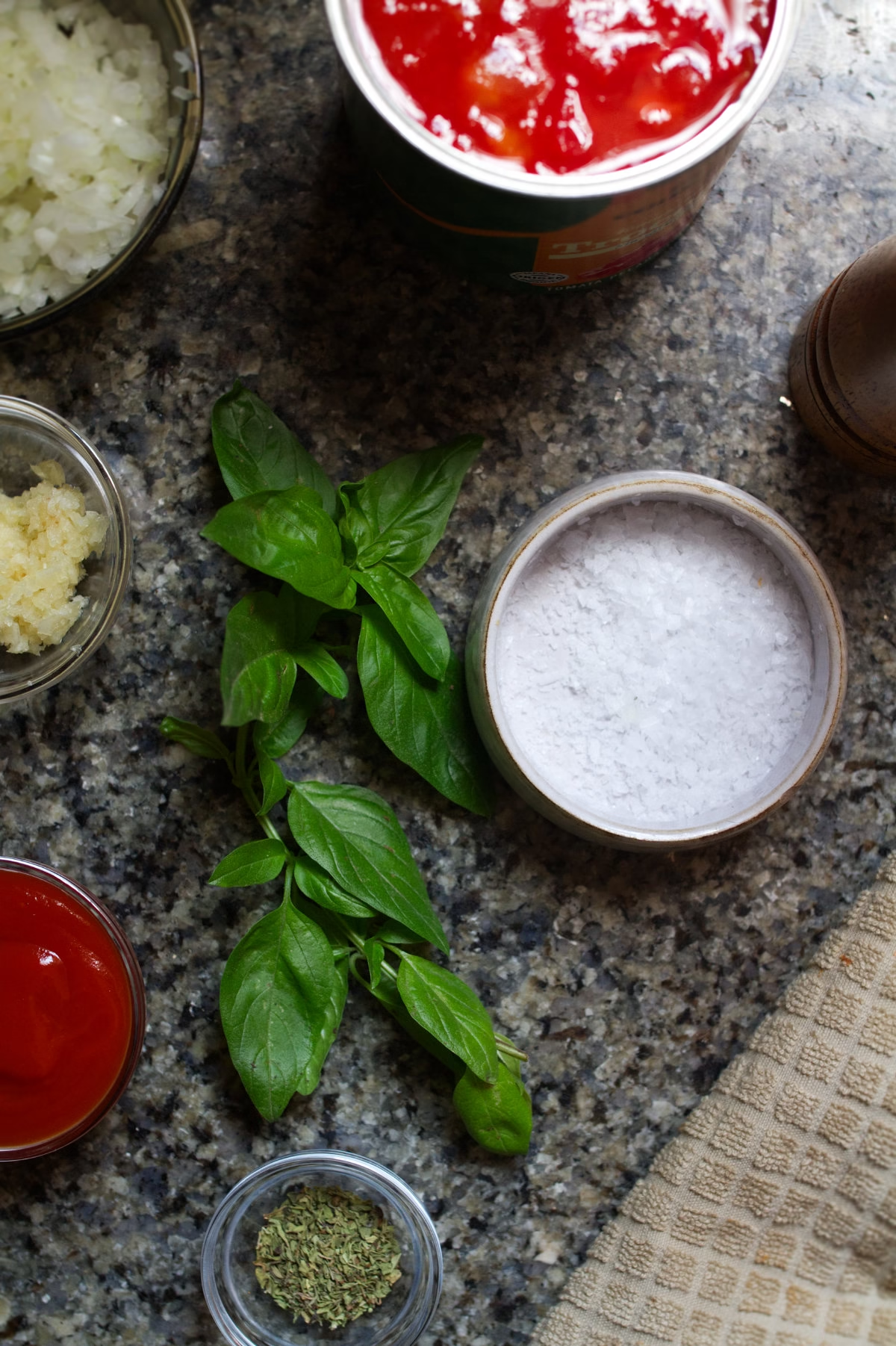
What Goes with Napoletana Sauce
Napoletana sauce is beautifully versatile — it’s one of those Italian staples that makes almost anything taste homemade and full of heart. Try it with:
- Classic Pasta: Toss through spaghetti, penne, or rigatoni for a quick, comforting meal. Finish with a drizzle of extra virgin olive oil and a sprinkle of Parmesan or pecorino.
- Pizza Base: Use it as a simple, flavorful pizza sauce for Margherita, Veggie, or Capricciosa.
- Our Delicious Spinach and Ricotta Cheese dumplings – Known as ‘malfatti’ or the ugly dumpling, these little cheesy morsels are a standout favorite recipe of ours this year! Trust us, you’ll love it when the delicious dumplings are oven baked on a layer of napoli sauce.
- Eggplant or Chicken Parmigiana: Layer it with lightly fried eggplant or chicken cutlets, mozzarella, and basil for an Italian favorite.
- Seafood Dishes: Pair with grilled prawns or calamari — the tomato and garlic complement the sweetness of seafood perfectly.
- Gnocchi or Malfatti: Spoon over soft ricotta or potato dumplings for a cozy, rustic meal.
- Bread Dip or Bruschetta: Serve warm with crusty bread or over toasted baguette slices as an easy starter.
🍷 Wine Pairing Suggestions
The key to pairing wine with Napoletana sauce is balancing the tomato’s natural acidity and herbaceous notes. Look for medium-bodied wines with good acidity and soft tannins — Italian reds and crisp whites work beautifully.
Red Wine Pairings:
- Chianti (Tuscany) – A classic match! Its bright cherry notes and balanced acidity complement tomato-based sauces perfectly.
- Montepulciano d’Abruzzo – Smooth and medium-bodied with earthy undertones that echo the rustic nature of the sauce.
- Nero d’Avola (Sicily) – Rich yet soft, with subtle spice that pairs well with oregano and garlic.
White Wine Pairings:
- Vermentino (Sardinia or Liguria) – Crisp, citrusy, and fresh — ideal if you’re serving the sauce with seafood.
- Falanghina (Campania) – From the same region as Naples, this wine’s light body and mineral finish make it a natural local pairing.
- Pinot Grigio – A safe, refreshing choice if you prefer something simple and versatile.
Chef Tip: If you’re enjoying your Napoletana sauce with pizza or pasta, you can’t go wrong with a glass of dry Italian rosé (Rosato), it balances tomato acidity beautifully and keeps things light and summery.
More Italian Recipes:
- Classic Italian Pasta Soup with White Beans | Pasta e Fagioli
- Caprese salad (Insalata Caprese)
- Classic Summery Bruschetta
- Panzanella Salad – Tuscan Tomato and Bread Salad
- Creamy Whipped Ricotta with Roasted Cherry Tomatoes
- Gorgonzola Pizza With Pear and Red Onion
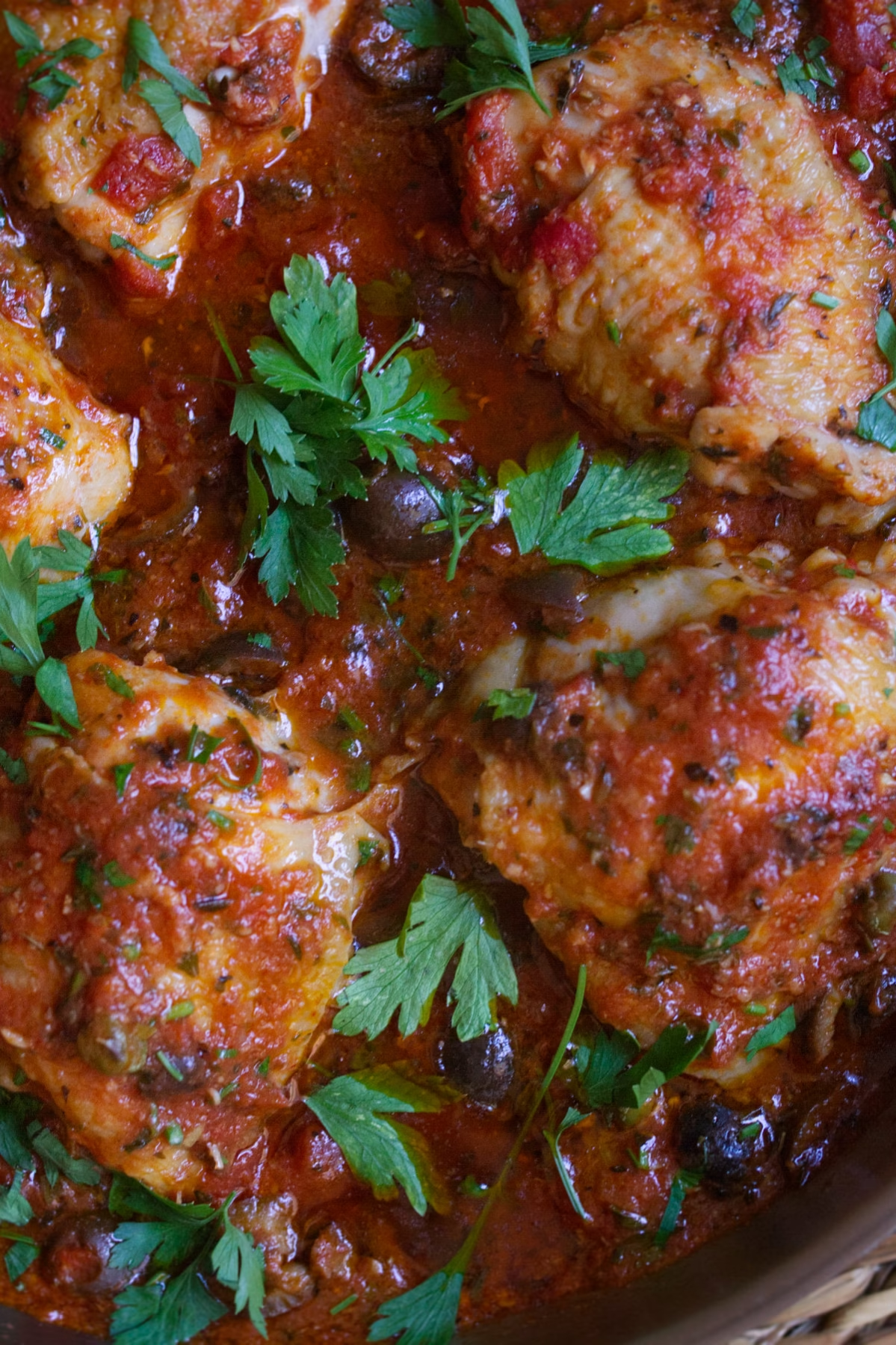
Nutrition Facts (per serving)
(Based on 6 servings — using high-quality olive oil and San Marzano tomatoes)
| Nutrient | Per Serving | % Daily Value (DV) |
| Calories | 110 kcal | 6% |
| Total Fat | 7 g | 9% |
| Saturated Fat | 1 g | 5% |
| Trans Fat | 0 g | — |
| Cholesterol | 0 mg | 0% |
| Sodium | 280 mg | 12% |
| Total Carbohydrates | 10 g | 4% |
| Dietary Fiber | 2 g | 7% |
| Total Sugars | 5 g | — |
| Protein | 2 g | 4% |
| Vitamin A | 400 IU | 8% |
| Vitamin C | 12 mg | 15% |
| Calcium | 30 mg | 2% |
| Iron | 1 mg | 6% |
💡 Percent Daily Values are based on a 2,000 calorie diet. Actual values may vary depending on ingredients and portion sizes.
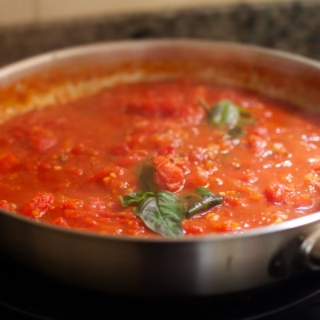
How to Make Napoletana Sauce – Easy Italian Napoli Sauce Recipe 🇮🇹
Equipment
- 12-Inch Stainless Steel Frying Pan or skillet
- Wooden Cutting Board
- Chef Knife
- Garlic press
- Immersion Blender (optional)
Ingredients
- Extra Virgin Olive Oil
- 1 small onion finely diced
- 3 garlic cloves minced
- 800 g 28 oz canned peeled Tomatoes (ideally San Marzano)
- 2 Tbsp Tomato Paste
- ½ tsp Dried Oregano organic
- A few fresh basil leaves with stems
- Salt and Freshly ground black pepper to taste
- 1 tsp white sugar optional
Instructions
Step 1 – Sauté aromatics
- In a wide pan, heat the olive oil over medium heat.Extra Virgin Olive Oil
- Add the onion and sauté for 5 minutes1 small onion
- Add the garlic and gently sauté until fragrant, around 2 minutes — do not let it burn.3 garlic cloves
Step 2 – Add tomatoes
- Add the canned tomatoes and stir through.800 g 28 oz canned peeled Tomatoes (ideally San Marzano)
- If using whole (peeled) tomatoes, crush with a spoon or spatula.
Step 3 – Simmer
- Add a pinch of salt, some black pepper, and the tomato paste2 Tbsp Tomato Paste, ½ tsp Dried Oregano, Salt and Freshly ground black pepper
- Reduce heat to low and let the sauce simmer gently for 20 minutes, stirring occasionally.
- The sauce should thicken slightly and the oil will rise to the top
- Taste and adjust seasoning (salt, pepper) and add any sugar if required.1 tsp white sugar
- Add the bunch of basil and simmer for another 10-15 minutes.A few fresh basil leaves
Step 4 – Serve
- Remove the basil before serving or blending.
- Serve over your favorite pasta, veggies, or these amazing spinach and ricotta cheese dumplings (Malfatti).
- Enjoy!
Video
Notes
Cooking Tips for the Perfect Napoletana Sauce
- Use San Marzano D.O.P. tomatoes.
For true Neapolitan flavor, go for San Marzano D.O.P. tomatoes — they’re naturally sweet, low-acid, and packed in rich juice. - Don’t rush the simmer.
Letting the sauce bubble gently for at least 30–40 minutes allows the flavors to deepen and the tomato’s natural sweetness to develop. Slow and low is the Italian secret. - Sweetness and seasoning check.
If your tomatoes are too acidic, a pinch of sugar balances the flavor naturally. It’s important to check and adjust seasoning levels around half way through. Don’t add all the seasoning all at the beginning. - Don’t burn the garlic!
Garlic that browns too much turns bitter — so add it after the onion has softened and keep the heat medium-low. Saute for around 2 minutes or until the garlic becomes fragrant. - Basil at the end.
Fresh basil loses its aroma if cooked too long. Add it toward the end of simmering for a fresher, more vibrant flavor. We suggest adding it during the last 5-10 minutes of the simmer. - Olive oil matters.
Use good-quality extra virgin olive oil — it makes a huge difference to the sauce’s flavor and aroma. - Make ahead & freeze.
Napoletana sauce tastes even better the next day. Store in the fridge for up to 5 days or freeze in portions for quick midweek pasta nights. - 8. Use it everywhere. This sauce isn’t just for pasta — try it on homemade pizza, chicken parmigiana, eggplant involtini, or as a base for lasagna and meatballs al sugo.
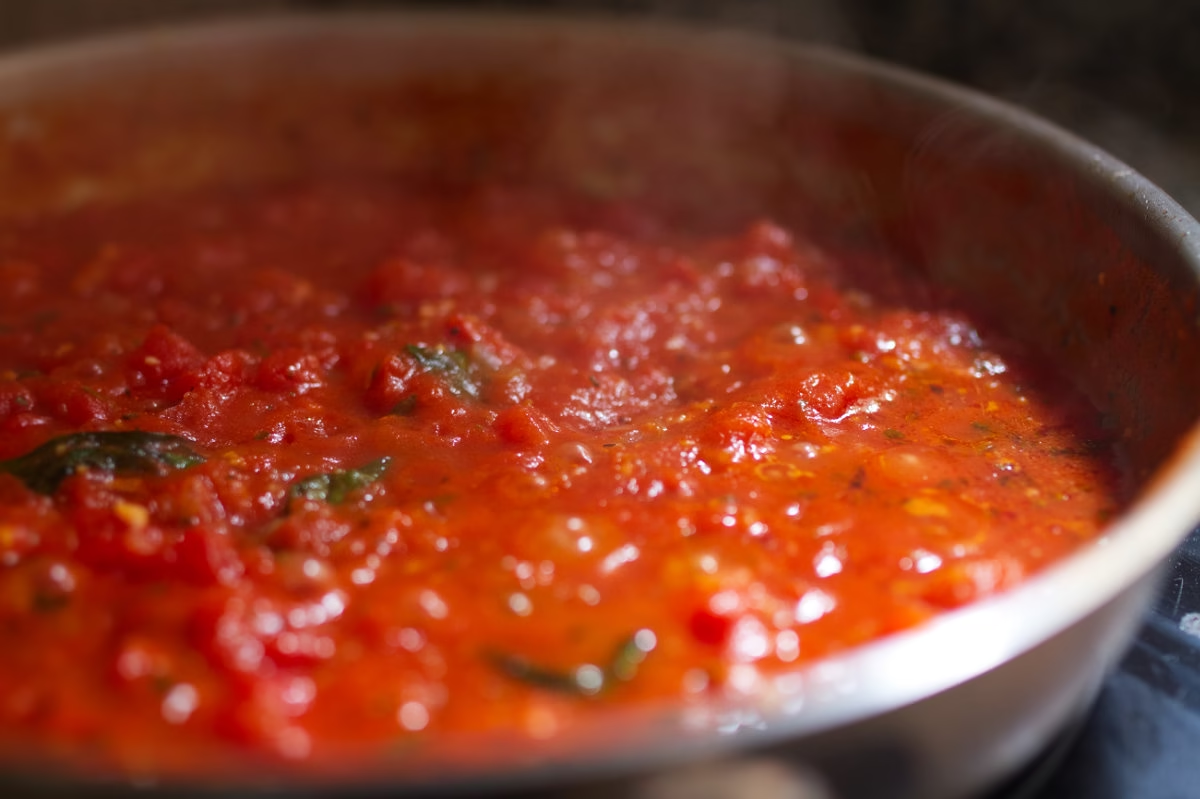
FAQs
1. What’s the difference between Napoletana sauce and Marinara sauce?
Napoletana sauce is Italy’s traditional tomato sauce from Naples — it’s richer, slower-cooked, and often includes basil. Marinara is a quicker, lighter version typically used in the U.S.
2. Can I use fresh tomatoes instead of canned?
Yes! Use about 1.2 kg (2.6 lbs) of ripe Roma or plum tomatoes. Blanch, peel, and chop before cooking for the best texture and flavor.
3. How long does Napoletana sauce last in the fridge?
Stored in an airtight container, it keeps for 4–5 days in the fridge or up to 3 months in the freezer.
4. Can I make Napoletana sauce without onion or garlic?
Absolutely. Many Italian households adapt it — omit onion for a lighter sauce or skip garlic for a milder flavor.
5. Why add sugar to tomato sauce?
It’s optional — just a small pinch balances acidity, especially if your tomatoes are slightly tart.
6. Can I blend the sauce for a smoother texture?
Yes! Use an immersion blender or food mill once it’s cooled slightly for a silky finish.
